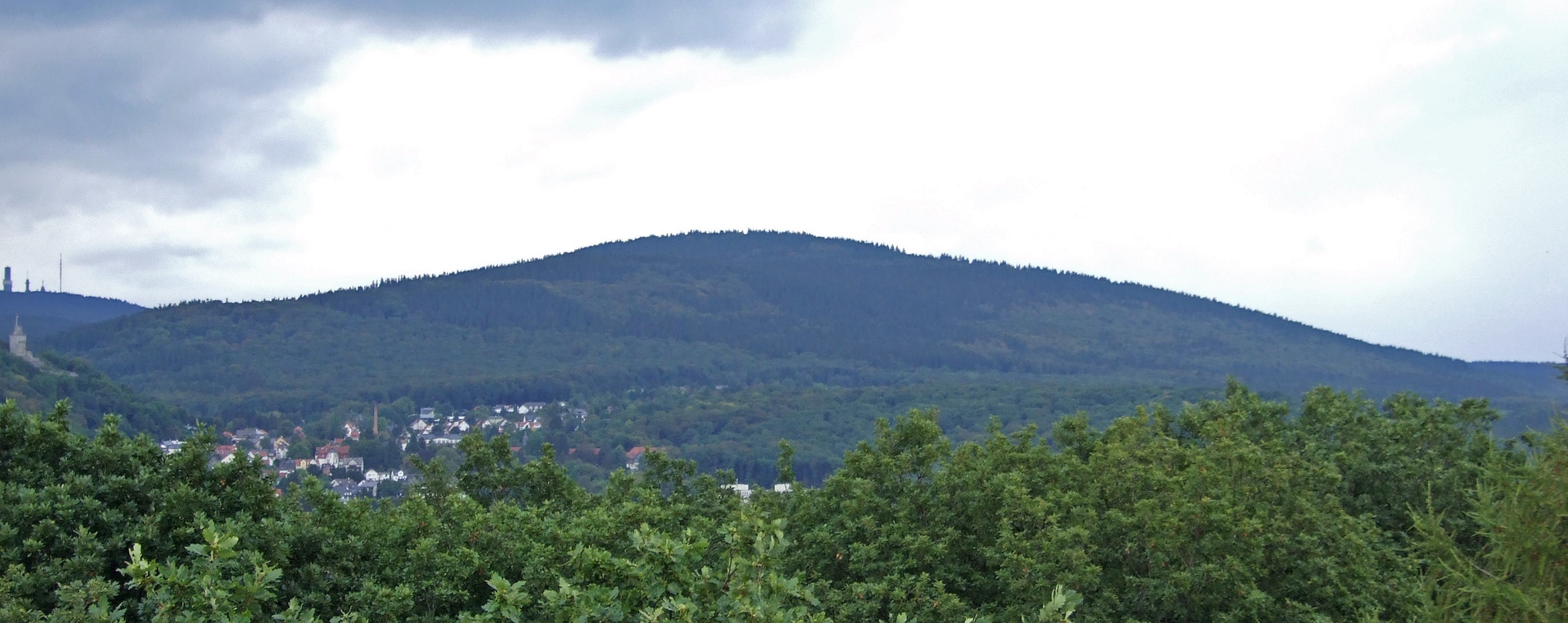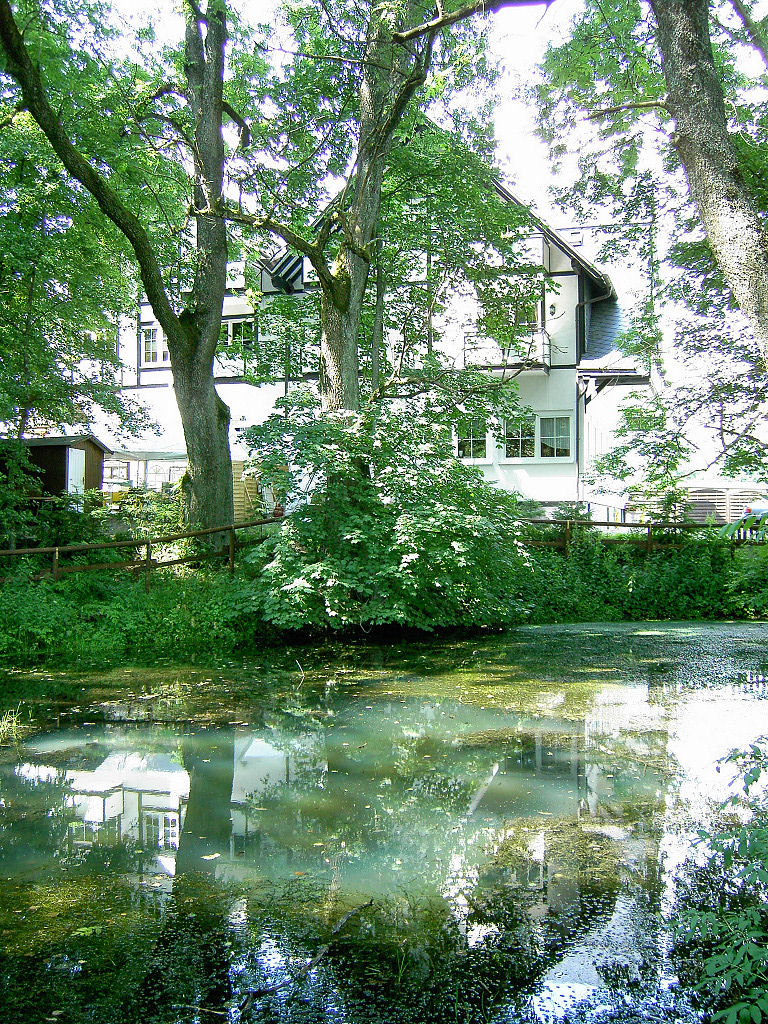|
Taunus
The Taunus () is a mountain range in Hesse and Rhineland-Palatinate, Germany, located north west of Frankfurt and north of Wiesbaden. The tallest peak in the range is '' Großer Feldberg'' at 878 m; other notable peaks are '' Kleiner Feldberg'' (825 m) and '' Altkönig'' (798 m). The Taunus range spans the districts of Hochtaunuskreis, Main-Taunus-Kreis, Rheingau-Taunus, Limburg-Weilburg, and Rhein-Lahn. The range is known for its geothermal springs and mineral waters that formerly attracted members of the European aristocracy to its spa towns. The car line Ford Taunus is named after it. Location and boundary The Taunus is the southeastern part of the Rhenish Slate Mountains. The low mountain range is about 75 km long from southwest to northeast and about 35 km wide across it from northwest to southeast,it covers an area of about 2700 km2. In the west, the Upper Middle Rhine Valley borders the Taunus and separates it from the western Hunsrück. In the n ... [...More Info...] [...Related Items...] OR: [Wikipedia] [Google] [Baidu] [Amazon] |
Ford Taunus
The Ford Taunus is a family car manufactured and marketed by Ford Germany throughout Europe. Models from 1970 on were manufactured using the same basic construction as the Ford Cortina MkIII in the United Kingdom, and later on, the two car models were rebadged variants of each other, differing primarily in their steering wheel placement. Introduced in 1939, and marketed over numerous generations through model year 1994, the model line was named after the Taunus mountain range in Germany. __TOC__ Taunus G93A (1939–1942) / G73A (1948–1952) The Ford Taunus G93A was a development of the Ford Eifel, and used the same 1172 cc four cylinder engine, but in a longer chassis and a streamlined body. It was the first German Ford to have hydraulic brakes. First introduced in 1939, production was halted in 1942 due to the war. Production recommenced in November 1948 after the British Occupation had ended. In total, 7,128 pre-war Taunuses (G93A) were made, including estate cars ... [...More Info...] [...Related Items...] OR: [Wikipedia] [Google] [Baidu] [Amazon] |
High Taunus
The High Taunus () is the name of a major natural region unit (no. 301) in the Hessian Central Uplands range of the Taunus mountains and forms the area immediately around the main ridge of the Taunus. It should not be confused with the term Hochtaunus, in the sense used in the name of the county of Hochtaunuskreis which is only the eastern part of the Feldberg massif. The High Taunus separates the Anterior Taunus in the south from the Lower Taunus in the north and includes the majority of the highest mountains and hills of the Taunus. The eastern part of the natural region lies within the Taunus Nature Park and its western part in the Rhine-Taunus Nature Park. Location The High Taunus runs as a mountain ridge from southwest to northeast from the Middle Rhine opposite the Bingen Forest to the Wetterau before Bad Nauheim for a distance of 75 kilometres; its average widths being only 4 to 5 km. The narrowest point on the ridge is only 2.4 km and is loc ... [...More Info...] [...Related Items...] OR: [Wikipedia] [Google] [Baidu] [Amazon] |
Altkönig
The Altkönig is the third highest mountain of the Taunus range in Hesse, Germany, reaching a height of . Its summit is lies within the borough of Kronberg im Taunus not far from the village of Königstein im Taunus which is part of Falkenstein in the Hessian county of Hochtaunuskreis. With an isolation of 2,450 metres and a prominence of over 136 metres above saddle at the Fuchstanz () leading to the Kleiner Feldberg (), the Altkönig is one of the most striking peaks in the Taunus. Together with the Großer Feldberg () and Kleiner Feldberg it forms the crown of the High Taunus ( Feldberg-Taunus ridge); unlike the Feldberg, however, it does not lie on the main ridge itself but rises to the south and parallel with it. On the Altkönig are the Altkönig Circular Rampart and on its spurs the Lips and Victoria Temples, the White Wall and the Hünerberg Circular Rampart. In the local region are Altkönig School in Kronberg, the local Altkönig Foundation and Altkön ... [...More Info...] [...Related Items...] OR: [Wikipedia] [Google] [Baidu] [Amazon] |
Frankfurt
Frankfurt am Main () is the most populous city in the States of Germany, German state of Hesse. Its 773,068 inhabitants as of 2022 make it the List of cities in Germany by population, fifth-most populous city in Germany. Located in the foreland of the Taunus on its namesake Main (river), Main, it forms a continuous conurbation with Offenbach am Main; Frankfurt Rhein-Main Regional Authority, its urban area has a population of over 2.7 million. The city is the heart of the larger Rhine-Main metropolitan region, which has a population of more than 5.8 million and is Germany's Metropolitan regions in Germany, second-largest metropolitan region after the Rhine-Ruhr metropolitan region, Rhine-Ruhr region and the List of EU metropolitan regions by GDP#2021 ranking of top four German metropolitan regions, fourth largest metropolitan region by GDP in the European Union (EU). Frankfurt is one of the ''de facto'' four main capitals of the European Union (alongside Brussels, Luxembourg Cit ... [...More Info...] [...Related Items...] OR: [Wikipedia] [Google] [Baidu] [Amazon] |
Rheingau-Taunus
Rheingau-Taunus is a Kreis (district) in the west of Hesse, Germany. Rheingau-Taunus-Kreis is part of the Darmstadt region; its main administrative seat is Bad Schwalbach. Outposted sections of the local administration are located in Idstein and Rüdesheim am Rhein. Neighbouring districts are the Hessian districts of Limburg-Weilburg, Hochtaunuskreis, Main-Taunus-Kreis, district-free Wiesbaden and Mainz-Bingen and Rhein-Lahn which are located in Rhineland-Palatinate. History From 983 to 1803, the Rheingau area belonged to the Electorate of Mainz and was then merged into the new Duchy of Nassau. The Untertaunus region was part of the Earldom of Katzenelnbogen. From 1816 onward, the whole area of the district became part of the Duchy of Nassau. After the 1866 Austro-Prussian war, Nassau was annexed by Prussia and formed the new province of Hesse-Nassau. In 1867, the province was divided into districts. Therefore, the districts of Rheingau and Untertaunus were created. Afte ... [...More Info...] [...Related Items...] OR: [Wikipedia] [Google] [Baidu] [Amazon] |
Main-Taunus-Kreis
Main-Taunus is a ''Kreis'' (district) in the middle of Hessen, Germany and is part of the Frankfurt/Rhine-Main Metropolitan Region as well as the Frankfurt urban area. Neighboring districts are Hochtaunuskreis, district-free Frankfurt, Groß-Gerau, district-free Wiesbaden, Rheingau-Taunus. It is the second most densely populated rural district in Germany. History Before the era of Napoleon, the area was divided into many small bits and pieces of independent states. The most prominent of these were the Archbishopric of Mainz and the territory ruled by the Lords of Eppstein, who were later succeeded by the Landgraves of Hesse-Darmstadt. In 1806 the area became united for the first time as part of the Duchy of Nassau, which was annexed to Prussia in 1866. In 1928 the Main-Taunus district was formed when the cities of Wiesbaden and Frankfurt annexed adjoining areas, leaving the remaining unincorporated areas in the former districts of Wiesbaden and Höchst too small to sur ... [...More Info...] [...Related Items...] OR: [Wikipedia] [Google] [Baidu] [Amazon] |
Großer Feldberg
The Großer Feldberg ('Great Field Mountain') is, at a height of 879.5 metres, the highest elevation of the Taunus mountains, and of the entire Rhenish Massif. It is situated in the Hochtaunuskreis district in Hesse, Germany. The Feldberg/Taunus transmitter mast is set at the top of the mountain. A lookout tower affords long-distance views onto the Taunus hills to the North and West and over and beyond the Frankfurt Rhine Main Area, Rhein-Main plain to the South and East. A restaurant and a small hut offer food and drinks. The mountain is accompanied by the ''Kleiner Feldberg'', a subsidiary of 825 m at a distance of 1.3 km to the south-west, and the 798-metres-high Altkönig, 2.3 km to the south-east. Height There is a considerable uncertainty on the exact height of the Großer Feldberg, because the height given in the various sources varies up to several metres. * At the summit is the Feldberg summit cross including the summit register and information board, giving ... [...More Info...] [...Related Items...] OR: [Wikipedia] [Google] [Baidu] [Amazon] |
Wiesbaden
Wiesbaden (; ) is the capital of the German state of Hesse, and the second-largest Hessian city after Frankfurt am Main. With around 283,000 inhabitants, it is List of cities in Germany by population, Germany's 24th-largest city. Wiesbaden forms a conurbation with a population of around 500,000 with the neighbouring city of Mainz. This conurbation is in turn embedded in the Rhine-Main, Rhine-Main Metropolitan Region—Germany's second-largest metropolitan region after Rhine-Ruhr—which also includes the nearby cities of Frankfurt am Main, Darmstadt, Offenbach am Main, and Hanau, and has a combined population exceeding 5.8 million. The city is located on the Rhine (Upper Rhine), at the foothills of the Taunus, opposite the Rhineland-Palatine capital of Mainz, and the city centre is located in the wide valley of the small Salzbach (Wiesbaden), Salzbach stream. Wiesbaden lies in the Rheingau (wine region), Rheingau wine-growing region, one of Germany's List of German wine regions, ... [...More Info...] [...Related Items...] OR: [Wikipedia] [Google] [Baidu] [Amazon] |
Hochtaunuskreis
The Hochtaunuskreis is a ''Kreis'' (district) in the middle of Hesse, Germany and is part of the Frankfurt/Rhine-Main Metropolitan Region. Neighbouring districts are Lahn-Dill, Wetteraukreis, district-free Frankfurt, Main-Taunus-Kreis, Rheingau-Taunus-Kreis, Limburg-Weilburg. The Hochtaunuskreis and the Landkreis Starnberg regularly compete for the title of the wealthiest district in Germany. History The district was created in 1972 when the previous districts Obertaunus and Usingen were merged. Geography Geographically it covers the Taunus mountains. The highest elevation of the Taunus, the 881 meter high Großer Feldberg, is in the district. Lowest elevation of the district with 130m is the village ''Ober Erlenbach''. The wealthy towns in the district's densely populated southern part belong to the Frankfurt urban area. Coat of arms The coat of arms is a dimidiation of the arms of the Obertaunus district in the left half and the Usingen district in the right half. It sho ... [...More Info...] [...Related Items...] OR: [Wikipedia] [Google] [Baidu] [Amazon] |
Hesse
Hesse or Hessen ( ), officially the State of Hesse (), is a States of Germany, state in Germany. Its capital city is Wiesbaden, and the largest urban area is Frankfurt, which is also the country's principal financial centre. Two other major historic cities are Darmstadt and Kassel. With an area of 21,114.73 square kilometers and a population of over six million, it ranks seventh and fifth, respectively, among the sixteen German states. Frankfurt Rhine-Main, Germany's second-largest metropolitan area (after Rhine-Ruhr), is mainly located in Hesse. As a cultural region, Hesse also includes the area known as Rhenish Hesse (Rheinhessen) in the neighboring state of Rhineland-Palatinate. Etymology The German name , like the names of other German regions ( "Swabia", "Franconia", "Bavaria", "Saxony"), derives from the dative plural form of the name of the inhabitants or German tribes, eponymous tribe, the Hessians (, singular ). The geographical name represents a short equivalent o ... [...More Info...] [...Related Items...] OR: [Wikipedia] [Google] [Baidu] [Amazon] |
Kleiner Feldberg
The Kleiner Feldberg is the second-highest mountain in the Taunus mountain range, located in Hesse, Germany. It has an elevation of . The Großer Feldberg is located in its immediate neighbourhood. Obeservatory In 1913, a meteorological and geophysical observatory was built there by German meteorologist Franz Linke. In 1988 an astronomical observatory was built on the mountain's top. Surroundings The source of the Weil River and a small castle of the Limes Germanicus The (Latin for ''Germanic frontier''), or 'Germanic Limes', is the name given in modern times to a line of frontier () fortifications that bounded the ancient Roman provinces of Germania Inferior, Germania Superior and Raetia, dividing the Roman ... are located at its northern base. Climate References * Kümmerly+Frey: The New International Atlas. Rand McNally (1980) See also * List of mountains and hills of the Taunus Mountains of Hesse Mountains and hills of the Taunus High Taunus {{He ... [...More Info...] [...Related Items...] OR: [Wikipedia] [Google] [Baidu] [Amazon] |
Lahn Valley
The Lahn () is a , right (or eastern) tributary of the Rhine in Germany. Its course passes through the federal states of North Rhine-Westphalia (23.0 km), Hesse (165.6 km), and Rhineland-Palatinate (57.0 km). It has its source in the Rothaargebirge, the highest part of the Sauerland, in North Rhine-Westphalia. The Lahn meets the Rhine at Lahnstein, near Koblenz. Important cities along the Lahn include Marburg, Gießen, Wetzlar, Limburg an der Lahn, Weilburg and Bad Ems. Tributaries to the Lahn include the Ohm, Dill, the Weil and the Aar. The lower Lahn has many dams with locks, allowing regular shipping from its mouth up to Runkel. Riverboats also operate on a small section north of the dam in Gießen. Source area The Lahn is a -long, right (or eastern) tributary of the Rhine in Germany. Its course passes through the federal states of North Rhine-Westphalia (23.0 km), Hesse (165.6 km), and Rhineland-Palatinate (57.0 km). The Lahn originates ... [...More Info...] [...Related Items...] OR: [Wikipedia] [Google] [Baidu] [Amazon] |






